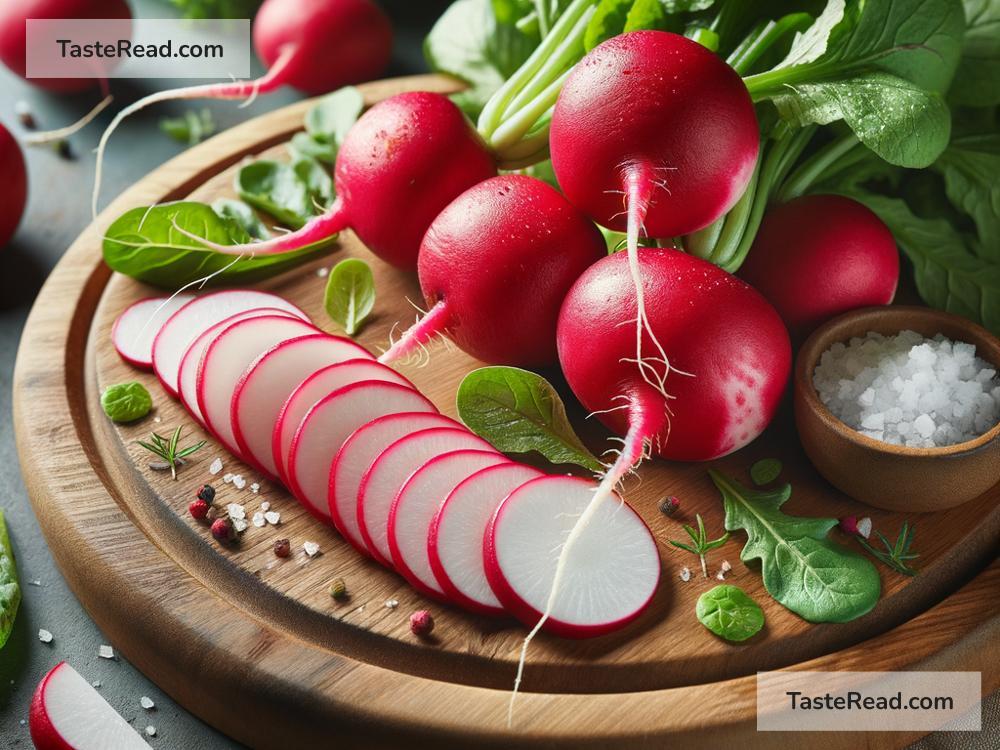The Spicy Secret Behind Radishes: Chemistry at Work
Radishes are small, colorful vegetables with a crisp texture and a spicy kick. Whether you’re slicing them into a salad or crunching on them as a snack, their peppery flavor adds a unique zing to any dish. But have you ever wondered what makes radishes taste spicy? Is it magic? Nope—it’s science! The spicy flavor of radishes comes down to chemistry. Let’s dig into the fascinating world of radish spiciness and explain it in simple terms.
Why Are Radishes Spicy?
Radishes belong to the mustard family, also known as Brassicaceae. This family of vegetables is well-known for its sharp, strong flavors. Horseradish, mustard, and wasabi are close relatives of radishes. If you’ve ever tasted any of these, you’ll notice the same spicy burn that radishes have.
The spicy sensation in radishes comes from natural chemical compounds called isothiocyanates. Don’t worry—this fancy word is easier to understand than it sounds. Isothiocyanates are molecules created when radishes are damaged, like when you bite into them, cut them, or grate them. These compounds are responsible for the sharp, hot kick you taste.
The Science Behind Isothiocyanates
Here’s how it works: Inside a radish, there are special chemicals stored separately. One is called a glucosinolate, and the other is an enzyme called myrosinase. On their own, these substances don’t taste spicy. It’s only when the radish is physically damaged—like when you slice it or bite into it—that the two chemicals mix together.
Once the glucosinolates combine with the myrosinase enzyme, they react and create isothiocyanates. It’s this chemical reaction that produces the spicy flavor. You can think of glucosinolates and myrosinase as two puzzle pieces—when they connect, they create a new molecule, the isothiocyanate.
Isothiocyanates don’t just taste spicy—they also contribute to the pungent aroma of radishes. The spice isn’t caused by heat or temperature, like it is with chili peppers; instead, it’s more of a “tingling” sensation that can feel sharp in the nose and throat. This is why radishes can make your mouth water and your eyes widen when you eat them.
Why Do Radishes Taste Different?
Not all radishes are equally spicy, and different varieties can vary in their flavor intensity. You’ve probably noticed that radishes can range from mildly peppery to downright fiery. So, what makes some radishes spicier than others?
The level of spiciness depends on factors like the type of radish, where it was grown, and its growing conditions. For example:
-
Variety of Radish: Some types of radishes naturally contain higher amounts of glucosinolates and enzymes. For instance, the popular red “Cherry Belle” radish tends to have a mild flavor, while the larger white Daikon radish is less spicy and more subtle.
-
Soil and Climate: Radishes grown in colder weather may be less spicy, while radishes grown in hotter conditions can taste more intense. This is because environmental stress during growth can boost the production of glucosinolates.
-
Age of the Radish: Young radishes usually taste mild, while older radishes develop a stronger and spicier flavor. This is because the chemical compounds become more concentrated over time.
Benefits of Isothiocyanates
So, radishes are spicy because of isothiocyanates. But did you know that these compounds have benefits beyond adding flavor to your food? Scientists have studied isothiocyanates for their potential health benefits, and the results are pretty interesting:
-
Anti-Cancer Properties: Isothiocyanates may help the body fight harmful cells. Studies suggest that these compounds could play a role in preventing certain types of cancer by reducing inflammation and promoting detoxification.
-
Antioxidants: Radishes contain antioxidants, which help protect your body from damage caused by free radicals. These antioxidants are good for your skin, immune system, and overall health.
-
Digestive Aid: Radishes can also help support digestion, thanks to their fiber and the chemical activity of their spicy compounds. Eating radishes may improve how your stomach processes food.
How to Enjoy Radishes
If you love radishes, there are plenty of ways to enjoy their spicy flavor. Slice them thin and sprinkle them with salt for a quick snack, toss them into salads for some crunch, or pickle them to enjoy their tart and peppery taste. For a milder flavor, cook or roast radishes—the heat reduces their spicy compounds, creating a sweeter taste. If you want a stronger punch, eat them raw!
Conclusion
The spicy flavor in radishes isn’t just a random accident—it’s the result of a fascinating chemical reaction. When you bite into a radish, you’re triggering nature’s own chemistry lab, creating isothiocyanates that give radishes their bold, sharp taste. The next time you enjoy a radish, you can impress your friends by explaining how its spicy kick is really the result of enzymes mixing with glucosinolates. Who knew vegetables could be so interesting?
Radishes may be small, but they pack a lot of flavor—and a lot of science. Whether you enjoy their spiciness or prefer a milder variety, understanding the chemical basis of their unique flavor makes eating them even more fun!

